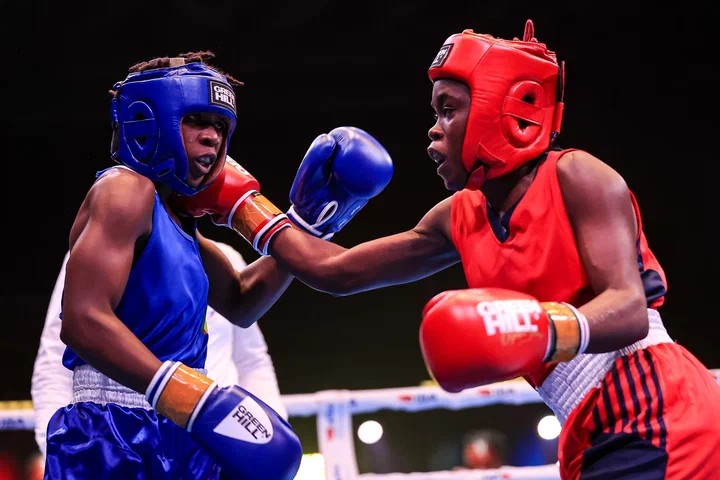Cape Verde’s Paris-bound David Pina, in a recent interview with AFBC Communications, said it’s of paramount importance for African national boxing federations to have their boxers – especially those involved in top level competitions – undergo regular brain scanning and genetic tests.
Pina, a bronze medallist at the 2022 Africa Elite Championships, is one of the two African boxers who qualified for the Paris Olympics during the final world qualifiers held in Bangkok, Thailand.
He minced no words stating boxing is one of the high-risk sports and therefore regular brain scanning is important to help in detecting abnormality in the brain caused by repeated head punches.
“Now that the qualifiers are over my doctor and I will visit a neurosurgeon to undergo a brain scan,” Pina told me from Bangkok.
For the uninitiated, neurosurgeons are specialised doctors dealing in preventing, diagnosing and treating disorders of the brain, spine and nerves. They also treat and manage conditions that affect the flow of blood to the brain.
The most common brain injury in boxing is “punch-drunk syndrome” as it was first described in 1928. Such boxers suffer from what is known as Chronic Traumatic Encephalopathy (CTE) which is caused by repeated head blows. Hence the necessity of boxers undergoing regular brain scans to detect existing brain damage that might worsen if not properly cured or detected early enough.
Such tests have saved the lives of several pugilists who have been banned by neurosurgeons from boxing after neurological tests are carried out and a brain disorder is detected.
By being ordered to keep off boxing, the respective boxers avoid a looming disaster that can result in death, paralysis or a boxer going bonkers.
Professional boxers are more prone to the aforementioned brain disorders than amateur boxers because they fight in more rounds, not to mention the high level of brutality involved in the bare-chested game.
In Kenya, among boxers who have fallen victims of repeated head blows include late former internationals, Steve Thega and Okututi Njeka, both members of one of Kenya’s top clubs from the 60s to 80s, Kenya Prisons.
Okututi was paralysed on retiring from boxing and later passed on while Olympian Thega, a gold medallist at the 1968 and 1972 Africa Elite Boxing Championships, suffered from dementia and his brain was contracting due to repeated head blows.
Thega had to be accompanied by a family member whenever out of his house in Biafra Estate in Nairobi. If left alone, he would not remember his way back home.
Efforts by his family to get the Kenyan Boxing Federation and the government assist Thega travel to the United States for specialised treatment were unsuccessful.
Otherwise physically he was okay as I found out when I interviewed him at his house in Biafra but he couldn’t recall most of his past fights.
Perhaps if Thega had undergone regular neurological tests his condition could have been detected and treated. He died a lonely man totally ignored by a country he so committedly fought for since making his international debut in 1967.
While the neurological tests are very important to the top boxers, the challenge facing majority of the financially-crippled African boxing federations is the huge cost involved to engage the services of a neurosurgeon but if properly handled, respective governments can chip in to assist the international boxers involved in high octane competitions undergo neurological tests. A medical cover that includes treatment by neurosurgeons will be ideal for the boxers.
In view of the foregoing, it’s high time the International Boxing Association (IBA) makes it compulsory for its affiliates to have their top boxers undergo regular brain scans and genetic tests that indicate abnormalities in the brain.
If the IBA can introduce medical insurance for boxers or cater for half of the costs in conjunction with the governments of their national federations, that will be a big step forward by IBA in dealing with the health of the boxers which is key to the sport but largely ignored in Africa.
The IBA, in collaboration with independent stakeholders and doctors, can conduct a review leading to the introduction of new rules aimed at making boxing even more safer and remove that tag of brutality and reckless machoism often associated with this popular combat sport.
Over the years, boxing has of course evolved into a more safer sport with changes in technology from gloves to training that focuses on skills other than raw power aimed at injuring an opponent in the ring.
The changes have revolutionised boxing compared to the era of bare-knuckle fights that were characterised by sadism, brute force and brawling including wrestling down your opponent. This is one important area the IBA will have to look into with sober minds to see whether there’s need for more evolution of amateur boxing rules to re-brand it and remove that image of a sport for sadists who enjoy and clap on seeing blood, an opponent injured or brutally knocked out.
Available records show the longest bare-knuckle prize money fight was between John L. Sullivan and Jake Kilrain on July 8, 1889 in south Mississippi in the USA.. The fight – whose venue was kept a secret because prizefighting was then illegal in the country’s 38 states – lasted 75 rounds with Kilrain’s face a mask of blood and. Sullivan, who sipped whisky between the rounds, was smeared with blood and exhausted. The doctor threw in the sponge indicating the fight was over.
Both Sullivan and Kilrain were later arrested and sentenced to one year of hard labour because prizefighting was illegal. Sullivan was found guilty of prizefighting and Kilrain was found guilty of assault and battery. They both appealed their convictions with Sullivan’s one-year jail term reduced. He forfeited $500 of $26,000 earnings while Kilrain was jailed for two months and fined $200. A good samaritan, Colonel Charles Rich, bought his sentence. Kilrain therefore worked for Rich until his sentence was over.
As for the longest fight with newly-introduced padded gloves, it lasted 110 rounds, 7hrs 19min on April 6, 1893. The fight was between Andy Bowen of New Orleans and Jack Burke from Texas. At first it was declared a no contest and later changed to a draw.
Such was the inhumane manner boxing was organised without regulations. Things however changed for the better with the introduction of Marquess Queensberry Rules in late 19th century.
The rules have since evolved to what boxing is today with gloves made more safer. IBA competition rules state in Elite and Youth Men’s competitions, 10 ounce gloves will be used from minimumweight to welterweight and 12 ounce gloves from light-middleweight to super-heavyweight. For Elite and Youth Women’s competitions, 10 ounce gloves are used in all competitions.
However, these safety precautions should not blind boxing authorities in Africa to ignore the importance of neurological tests for boxers involved in regular top level competitions.
Credit: AFBC Communications


